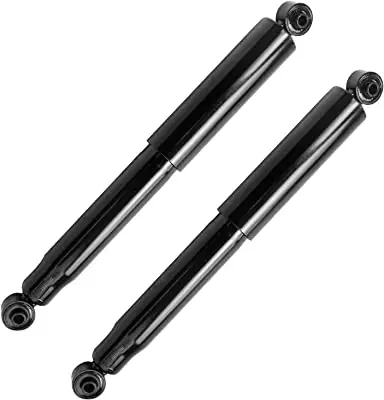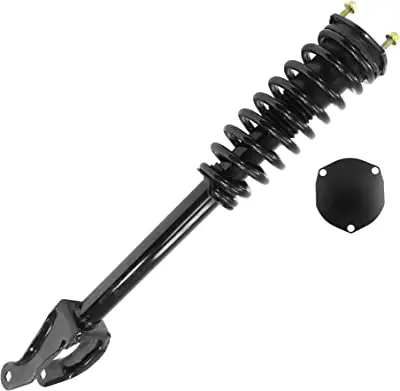If we’re not wrong, the question “Does my car have shocks or struts?” has popped up in your mind. Well, if you drive your car, you may run into shocks near one of the wheels, in addition to struts in another part of the vehicle. You may be guaranteed that your car includes shocks and struts instead of struts only if you take a second to look for the parts, as car models vary greatly.
However, this might not be enough to decide whether you need new shocks or struts when it comes to replacement. Yes, your mechanic may easily identify whether your car has shocks or struts. But, as a car owner, knowing its parts can give you peace of mind.
That’s why we have come up to give you a detailed explanation of how to identify shocks or struts in your car. Here, we’ll cover almost everything from their basics to some key differences.
What are Stocks?

Shocks or shock absorbers are used to absorb the shock when driving over unpaved surfaces and are set to digest when small vibrations are transmitted. However, shock absorbers don’t directly absorb the bulk of the impact. Rather, they feature pistons with a sealed tube of fluid or gas but absorb the amount of pressure transmitted.
In modern shocks, hydraulic fluid or gas transfers the pressure to prevent imperfections in the car’s contour from generating catastrophic damage. Shocks not only dampen the jolt felt by drivers, but they also displace the vibrations that materialize on vehicles.
What are Struts?

Struts are one of the vital elements of current independent suspension systems. They enable a vehicle’s front end to be coupled to the vehicle body. Generally, the top of the chassis is the place where struts are mounted in modern vehicles equipped with a strut assembly.
Struts can easily be adjusted to allow for camber and caster angle changes, which in turn help you find a suitable alignment for your car. Considering that struts control vehicle positioning, even a minor issue with struts may lead to problems with chassis alignment.
How Do You Know If You Have Shocks or Struts?
To determine whether your vehicle has shocks or struts, you can look for a few key differences:
Visual Inspection:
- Struts: A strut is a structural part of the vehicle’s suspension system. It’s typically a larger, more complex assembly that integrates various suspension components, including a spring and shock absorber. You’ll often see a spring wrapped around the strut assembly.
- Shocks: Shock absorbers are simpler and smaller in comparison. They don’t bear any of the vehicle’s weight; instead, they control the movement of the springs and suspension. Shocks are usually cylindrical and located near the wheels but not integrated with the spring.
Vehicle Handling and Ride:
- Vehicles with struts might have a slightly different ride feel compared to those with shocks, due to the integral role struts play in the suspension system. However, this is a subtle difference and may not be noticeable without a direct comparison.
Vehicle Type and Model:
- Some vehicle types are more likely to have either shocks or struts. For example, many modern passenger cars use struts at the front suspension. Trucks and older cars often have shock absorbers. Checking your vehicle’s manual can give you specific information.
Mounting Points:
- Struts are typically mounted to the vehicle’s chassis and the steering knuckle, making them a part of the steering system in many vehicles, particularly those with front-wheel drive.
- Shocks are not part of the steering system and are mounted between the vehicle’s body/frame and the suspension.
Difference Between Shocks and Struts
To give you a more clarified idea of shocks and struts, we’re going to differentiate these two shock absorption components based on several factors. Here we go:
The Role of Shock and Struts in Your Vehicle
We have a hint on the visual aspect of shocks and struts that distinguish them prominently. However, their working mechanism or pre-determined role in your vehicle is the root of almost all differences.
- Shocks
The function of the shock absorber is to maintain excursions of motion and suspension energy. This is done by converting the kinetic energy into thermal energy, or heat, which dissipates through the lubricating fluid. The resiliency of a shock absorber is determined by the speed at which the motion of suspension is accelerated and the number and size of the holes or gaps.
Modern shocks are designed to function based on the velocity of suspension movement, making them velocity-sensitive hydraulic damping devices. Thanks to this characteristic, shock absorbers can provide variable resistance depending on driving conditions.
- Struts
A small damper called a strut can be found in many independent suspensions on automobiles and trucks with front-wheel drive and rear-wheel drive. It is commonly used in modern suspensions in place of the dual ball joint and top control arm found in conventional suspensions. Because it’s compact and lighter, a strut is frequently used in contemporary suspensions.
Struts play a dual function, first, as shock absorbers they dampen movement. The first and foremost role of struts is shock absorption and of course, this is just like shocks do. Attached to the piston rod is a piston that rotates reversely with the hydraulic pressure and controls suspension and spring movement.
Components of Shocks and Struts
A piston is attached to the rod of the piston and moves fluid within the pressure tube. As the suspension moves up and down, gravitational and resistance forces compress the hydraulic fluid through pulsations, or holes, in the piston. However, the flow of fluid is mechanically controlled by these holes, so the piston itself slows down.
Whilst, struts tend to be composed of specific strut housings to ensure absolute frame assistance for the whole strut assembly and an occupant isolation unit within the strut body for controlling the motion of the body and shocks. Often, the lower end of the body secures to the steering knuckle, which in turn connects to a lower control arm with the help of a lower ball joint.
Replacement and Cost
Replacing shocks is less complicated and less risky than replacing struts. At the exact same time, your car is likely to need its own alignment when the struts are mended. Replacing shocks is much cheaper compared to exchanging struts because struts are much more involved and impact the powertrain of your vehicle.
Final Words
Does my car have shocks or struts? Is this question still in your mind? Hopefully, it’s not. We have tried our best to clarify the whole fact and give a proper direction to do your preliminary work on yourself when it’s time to replace your shocks or struts.
Read also: